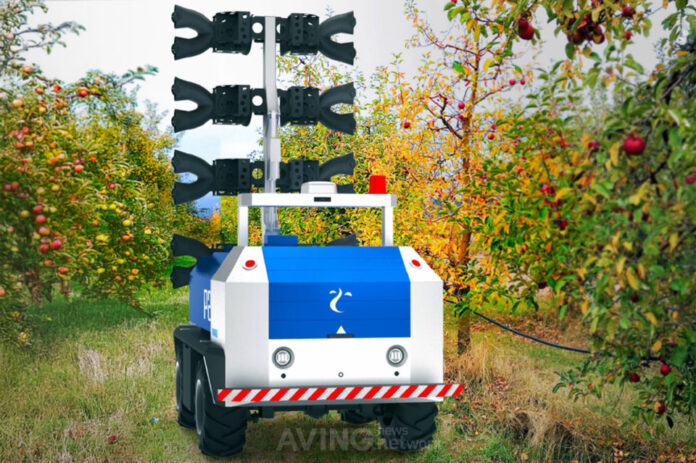Farmers face a tough mix of challenges: there aren’t always enough workers to tend vast orchards, and those who spray pesticides risk harming their own health by breathing in toxic chemicals. At the same time, overusing sprays pollutes soil and water, threatening both the environment and the long-term health of crops and people.
Enter Purida, a next-generation orchard spraying robot built to cut chemical use and protect both people and the planet. Mounted on an all-electric, lightweight frame, Purida drives itself through rows of fruit trees and applies pesticides only where they’re needed. It can cover more ground in less time, then automatically return to its base when the job is done
At its core, Purida uses AI-based autonomous driving, electrostatic nozzles, and a smart blower system. GPS, LiDAR, and vision sensors work together so the robot navigates tricky terrain and avoids obstacles.

Its electrostatic nozzles charge spray droplets so they cling evenly to both sides of leaves, cutting pesticide use by up to 40 %. A separate blower at each nozzle lets Purida adjust airflow for different crops—whether apples, pears, or grapes—ensuring precise coverage without waste. This is a game-changer.
Traditionally, orchard managers relied on manual or tractor-towed sprayers. Workers with backpack sprayers spray by hand, which is slow, uneven, and exposes them to chemicals. Larger tractors pull boom sprayers, but they still drench entire canopies and lose 65 %–70 % of spray to drift and runoff. Many growers also follow rigid spray calendars, applying chemicals whether disease risk is high or not, leading to unnecessary environmental harm.

Purida uses AI to remain stable on rough orchard floors. An AI constantly watches how it moves and reacts before trouble starts. Tiny gyroscopes and accelerometers feed a neural‐network model running on the robot’s onboard computer with real‐time data about tilt, speed, and direction.
That AI has been trained on thousands of examples of safe and unsafe slopes, so if it spots patterns that usually lead to tipping, it instantly slows or stops the robot. All of this happens in the blink of an eye, keeping Purida from leaning too far and risking a rollover even when the ground is uneven. Purida has been optimized to avoid surface root damage.
Behind the scenes, Purida also builds a live map of the orchard using GPS, LiDAR, and cameras. This “ground‐adaptive” navigation layer updates continuously, marking spots where the soil dips or banks too sharply and steering the robot around them. By weaving together fast sensor feedback, predictive AI, and adaptive path planning, Hada makes sure Purida can spray every row quickly and precisely, without ever losing its balance.
HADA has already moved Purida out of the lab and into real orchards. Since early 2025, the company has supplied Purida units to commercial farms through Korea’s government-backed New Technology Distribution Project, running pilot trials on apple and grape orchards.
Early feedback from those on-farm pilots has been overwhelmingly positive. Growers report that Purida’s autonomous path planning and remote-monitoring app let them handle spraying with a fraction of the crew they once needed.
They also praise the electrostatic nozzles for delivering more even coverage with noticeably less drift, and they’ve been impressed by the robot’s rock-steady stability on uneven terrain, especially when compared to tractor-towed booms. For many, the most significant relief has been knowing they no longer have to stand shoulder-to-shoulder with a live sprayer, inhaling fine mist every time they treat their trees

(From left) Hubert Nguyen, CTO of Ubergizmo, and Ha Jong-woo, CEO of Hada, taking a commemorative photo. │Photographed by – AVING News
Purida is built by Hada Co., Ltd., a Korean firm that has specialized in field-crop machinery since 2012. From their start building garlic planters, they’ve grown into an integrated solutions provider combining in-house hardware, software, and AI expertise. Today, they’re the only Korean company with this type of commercial orchard spraying robot—and they’re moving fast to expand globally, with plans to show off their next model at CES 2026.
Filed in . Read more about Agritech and Korea.
